Mortgage veteran Glenn Stearns is taking a different approach with his latest venture.
Kind Lending, a national wholesale mortgage lender and his second brainchild, is built on lean operations and a focus on efficiency — a contrast with his first company, Stearns Lending, which filed for Chapter 11 bankruptcy in 2019.
“This is not our first rodeo,” Stearns said in an interview with HousingWire.
Private equity giant Blackstone conducted the Stearns Lending bankruptcy process after acquiring a majority stake in parent company Stearns Holdings in 2015. The company was later sold to Rate in 2021, only for its wholesale channel to be shuttered the following year. Meanwhile, Stearns launched Kind in 2020 in the midst of the COVID-19 pandemic.
“When we started Kind Lending, we had margins of 450 basis points, which went to 40 in April 2020,” Stearns said. “We got started in a very hostile environment, so we had to be efficient from the start of our company. We didn’t have the same ability to lean on servicing that everybody had from the last cycle. So we started off with a completely different mindset.”
Stearns said the company’s disciplined cost structure has led to consistent profitability — without considering sales of mortgage servicing rights (MSRs) — which sets it apart from many independent mortgage banks (IMBs) that continue to operate in the red.
He’s not wrong. Inside Mortgage Finance (IMF) reported that Kind Lending originated $7.5 billion in mortgages in 2024, placing it among the lenders with more than $4 billion in annual volume — a segment that turned a profit in the first quarter of 2025, according to the Mortgage Bankers Association (MBA). These lenders recorded an average net production income of $882 per loan (20 basis points).
In contrast, very small lenders — those with less than $400 million in annual production — lost an average of $1,029 per loan in Q1 2025. As a group, IMBs posted a net loss of $28 per loan in the same period.
“If you have a quarterly volume of $100 million, it’s very hard to break a profit right now,” said Marina Walsh, the MBA’s vice president of industry analysis. ”I think cost is a big part of it. … You have the technology costs, fixed costs associated with just keeping the lights on, and those fixed costs are divided over fewer loans.”
When costs rise…
As costs rise across the mortgage industry, lenders like Kind are doubling down on efficiency — without compromising service.
“We feel cost pressures these days. Everybody’s seen inflation in different areas – there’s been a substantial inflation in the cost of the underwriter over the last year again,” said Mike Fontaine, co-president of Plaza Home Mortgage, which originated $6.5 billion in 2024, per IMF.
Labor costs remain one of the biggest cost challenges, given the cyclical nature of the mortgage business. Fontaine noted that while mortgage rates have remained relatively flat, even small fluctuations can rapidly affect volume, and quick surges are particularly hard to manage, since hiring and training take time. As a private company, Plaza does not comment on profitability.
“We try to staff according to our projections, but in the volatile market that we’re in right now, it can be challenging,” Fontaine added. “Part of it is outsourcing. Some pieces are in automation.”
AnnieMac Home Mortgage, a smaller lender that originated $3.1 billion in 2024, according to IMF, has adopted a highly variable cost structure to navigate market volatility. CEO Joe Panebianco said the company set a goal of maintaining 70% of its costs as variable — a high bar that it has reached through a combination of outsourcing and technology.
“We’ve been profitable. But you really need a variable business model,” Panebianco said.
AnnieMac’s segment — midsize lenders that originate $2 billion to $4 billion annually — posted the highest net production income in Q1 2025 at $1,295 per loan on average, or 26.5 bps, per MBA data.
Panebianco said one of the steepest cost increases has come from data providers — especially those tied to credit reports and FICO scores.
“Those costs have jumped dramatically, and it’s not something that’s easy to pass on to borrowers,” he said. To manage those vendor costs, AnnieMac is increasingly pursuing long-term agreements that allow for pricing adjustments if business volumes drop for more than a quarter.
Lenders find new sources of revenue
While expense control has been a survival strategy for many mortgage lenders, growth now hinges on finding new revenue streams beyond the traditional Fannie Mae and Freddie Mac loans.
At Kind Lending, Stearns said nonqualified mortgages (non-QMs) have quickly become a key part of the company’s playbook. Kind originated north of $200 million in non-QM loans last month, representing 18% of its total volume.
For Stearns, it’s about “making sure we can compete with the bread-and-butter” loans and then offering products with higher margins. Since the late 1980s, the market has had these options, from second trustees to subprime loans and now non-QMs, he added.
The push toward higher-margin products is a strategic evolution. “Volume is great, but volume without proper net margin is not,” Panebianco said. He expects non-QM products will account for 10% to 15% of overall mortgage volume in 2025.
Plaza is also tapping into niche markets to diversify its income. In addition to non-QM and home equity loans, renovation loans are playing a growing role.
“We’ve offered renovation loans for years,” Fontaine said, adding that the product performs better in certain geographies but is proving valuable in today’s market.
What a difference servicing makes
Mortgage servicing has played a critical role in supporting lenders’ financial performance, especially as origination margins remain thin and market volatility continues. With valuations for MSRs near historical highs, many lenders have opted to sell these assets to generate immediate income.
“Servicing is still helping lenders,” Walsh said. “Delinquencies are rising, but overall, there’s positive net financial income coming in. If you include servicing, it makes at least a 10 percentage-point difference between being profitable and not profitable.”
Plaza, for example, has reduced its servicing portfolio over the past year. As a third-party originator without a dedicated retention group, it doesn’t compete aggressively for borrower recapture.
“The general feeling is that rates will come down — I’ve been saying that for a year and it hasn’t happened yet,” Fontaine said. “We’ve taken the position that we’re better off monetizing some of our servicing now. The market is very good for sellers, and we’re better off taking the money now since we’re not holding servicing for recapture like a lot of the players out there are.”
Kind Lending has taken a similar approach. Stearns said the company has sold most of its servicing to take advantage of high MSR multiples, focusing instead on origination growth. Kind currently services about 5,000 loans, but Stearns said the company plans to begin retaining more servicing as it approaches a servicing book value of $1.5 billion to $2 billion.
While servicing sales can provide short-term financial relief, it raises questions about long-term borrower retention. Stearns acknowledged the trade-off but said it’s part of a phased strategy.
“That’s step two for us,” he said. “We had to make sure we ran a very smooth machine that could originate well, and now that we’ve hit the $1 billion per month, the next thing in our sights is servicing.”
How to beat the big guys
Kind, Plaza and AnnieMac aren’t among the country’s top mortgage lenders by volume, but they’re competing directly with the industry giants. And it’s only getting tougher.
By the end of 2024, the nation’s 10 largest lenders held 44.5% of market share — up seven percentage points from the prior year. With deep pockets, these players have expanded by slashing prices, compressing margins, and executing headline-grabbing acquisitions like Rocket Companies’ deals to purchase Redfin and Mr. Cooper.
While some lenders are also turning to acquisitions — often buying up smaller, distressed competitors — others are betting on organic growth to stay competitive.
AnnieMac, for example, acquired Unify Home Lending in April 2025 and plans another deal soon. The company aims to reach 1% market share, five times its current level, by building a network of hyperlocal experts, a model that Panebianco calls a contrast with large lenders’ reliance on big data.
“My firm belief is that if you are a local expert — if you know every house that is sold, the architects, the landscapers, the electricians, the plumbers, the HVAC folks — that business is yours to lose,” Panebianco said.
He added that as Rocket joins forces with Redfin, he’s not necessarily concerned about losing ground in local markets. Refinance business is different, but purchases still come down to the quality of the people on the ground, he said.
Plaza’s Fontaine said his firm goes head to head with United Wholesale Mortgage (UWM) and Rocket Pro in the wholesale space. But while those giants operate like “Ford manufacturing,” Fontaine likens Plaza to a shop that can “customize your car” by offering a broader product range and more flexibility — with a caveat.
“You have to be relevant on price, but you don’t always have to be the cheapest, and you’re not going to do well if you’re always the most expensive either,” Fontaine said. “There’s a perception that the two big guys are always the cheapest, and I don’t think that’s always an accurate perception.”
For Stearns, organic growth remains key. “Most of our partners want a second choice; we’ve been slowly becoming that second choice,” he said. “So far, it’s been really easy just to duplicate their experience [of UWM and Rocket Pro].”
Having experienced the Blackstone deal at Stearns Lending, he’s cautious about forced scale through M&A. “You can’t fit two different cultures into one organization — one of them won’t survive,” Stearns said.
First Time Home Buyer FAQs - Via HousingWire.com








